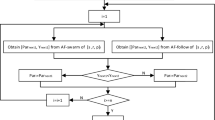Abstract
Determining the food supply after natural disasters is necessary to ensure the safety and social stability of people in disaster areas. An accurate prediction of food demand can help in the creation of a rational food supply program after natural disasters. This study proposes a grey prediction method to deal with irregular fluctuations in food demand after snowstorms. A GM(1,1) model with adaptive background values was established, and the Fourier series was applied to describe the irregular fluctuations in residuals. A genetic algorithm was designed based on GM(1,1) and Fourier series to optimize model parameters and to minimize the mean absolute percentage error. An optimal predictive function was also constructed by using the combined GM(1,1), Fourier series, and optimal parameters. The proposed forecasting method was used to predict three vegetables demand after the 2008 Chinese winter storm and was compared with the traditional GM(1,1) model. Results show that the proposed method has superior forecasting performance over traditional grey methods.



Similar content being viewed by others
References
Akay D, Atak M (2007) Grey prediction with rolling mechanism for electricity demand forecasting of Turkey. Energy 32:1670–1675
Chen CI, Huang SJ (2013) The necessary and sufficient condition for GM(1,1) grey prediction model. Appl Math Comput 219:6152–6162
Dang YG, Liu SF (2004) The GM models that x(n) be taken as initial value. Kybernetes 33(2):247–255
Deng JL (1982) Control problems of grey systems. Syst Control Lett 1(5):288–294
Deng JL (2002a) The elements on grey theory. Huazhong University of Science and Technology Press, Wuhan (in Chinese)
Deng JL (2002b) Solution of grey differential equation for GM(1,1) in matrix train. J Grey Syst 14(1):105–110
Fu ZY, Chen J (2009) Research on emergency material demand forecast model in disaster. Logist Sci Tech 32(10):11–13 (in Chinese)
Hsu LC (2003) Applying the grey prediction model to the global integrated circuit industry. Technol Forecast Soc Chang 70(6):563–574
Hsu LC (2011) Using improved grey forecasting models to forecast the output of opto-electronics industry. Expert Syst Appl 38(11):13879–13885
Hsu LC, Wang CH (2007) Forecast the output of integrated circuit industry using a grey model improved by the Bayesian analysis. Technol Forecast Soc Chang 74(6):843–853
Hsu YT, Liu MC, Yeh J, Hung HF (2009) Forecasting the turning time of stock market based on Markov–Fourier grey model. Expert Syst Appl 36(4):8597–8603
Lei YJ (2005) Genetic algorithm toolbox in MATLAB and its applications. Xi’an Electronic and Science University Press, Xi’an (in Chinese)
Li DC, Chang CJ, Chen CC, Chen WC (2012) Forecasting short-term electricity consumption using the adaptive grey-based approach—An Asian case. Omega 40:767–773
Lin CT, Yang SY (2003) Forecast of the output value of Taiwan’s opto-electronics industry using the grey forecasting model. Technol Forecast Soc Chang 70(2):177–186
Lin S, Zhang QS, Liu H (2012) Parameters optimization of GM(1,1) model based on artificial fish swarm algorithm. Grey Syst Theory Appl 2(2):166–177
Liu SF, Lin Y (2006) Grey information theory and practical applications. Springer, Berlin
Liu B, Liu SF, Zhai ZJ (2003) Optimum time response sequence for GM(1,1). Chin J Manag Sci 11(4):54–57 (in Chinese)
Pao HT, Fu HC, Tseng CL (2012) Forecasting of CO2 emissions, energy consumption and economic growth in China using an improved grey model. Energy 40:400–409
Song B, Hao S, Murakami S, Sadohara S (1996) Comprehensive evaluation method on earthquake damage using fuzzy theory. J Urban Plan Dev 122(1):1–17
Tan GJ (2000) The structure method and application of background value in grey system GM(1,1) model. Syst Eng Theory Pract 20(5):98–103
Tsai TH, Lee CK, Wei CH (2009) Neural network based temporal feature models for short-term railway passenger demand forecasting. Expert Syst Appl 36:3728–3736
Wang YF (2002) Predicting stock price using fuzzy grey prediction system. Expert Syst Appl 22(1):33–38
Wang ZX (2013) An optimized Nash nonlinear grey Bernoulli model for forecasting the main economic indices of high technology enterprises in China. Comput Ind Eng 64(3):780–787
Wang CH, Hsu LC (2008) Using genetic algorithms grey theory to forecast high technology industrial output. Appl Math Comput 195:256–263
Wang X, Zhuang YM (2011) Forecasting model of unconventional emergence incident resource demand based on case-based reasoning. East China Econ Manag 25(1):115–117 (in Chinese)
Wang ZX, Dang YG, Liu B (2009) Recursive solution and approximating optimization to grey models with high precision. J Grey Syst 21(2):185–194
Wang Y, Dang Y, Li Y, Liu SF (2010) An approach to increase prediction precision of GM(1,1) model based on optimization of the initial condition. Expert Syst Appl 37(8):5640–5644
Xie NM, Liu SF (2009) Discrete grey forecasting model and its optimization. Appl Math Model 33(2):1173–1186
Xu XY, Qi YQ, Hua ZS (2010) Forecasting demand of commodities after natural disasters. Expert Syst Appl 37(6):4313–4317
Xue HB, Wei Y (2008) Study on grey differential equation in terms of whitening. J Grey Syst 20(3):255–264
Zhang QS (2007) Improved grey GM(1,1) model particle swarm method. Chin J Manag Sci 15(5):126–129 (in Chinese)
Zhang B, Chen JG (2012) Emergency material demand forecast model for typhoon disaster response. J Tsinghua Univ 52(7):891–895 (in Chinese)
Acknowledgments
The author thanks the National Natural Science Foundation of China (Grant No. 71101132) for financially supporting this study.
Author information
Authors and Affiliations
Corresponding author
Rights and permissions
About this article
Cite this article
Wang, ZX. A genetic algorithm-based grey method for forecasting food demand after snow disasters: an empirical study. Nat Hazards 68, 675–686 (2013). https://doi.org/10.1007/s11069-013-0644-8
Received:
Accepted:
Published:
Issue Date:
DOI: https://doi.org/10.1007/s11069-013-0644-8




